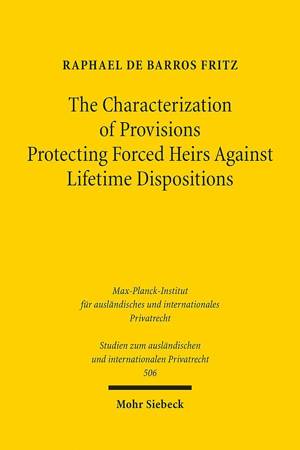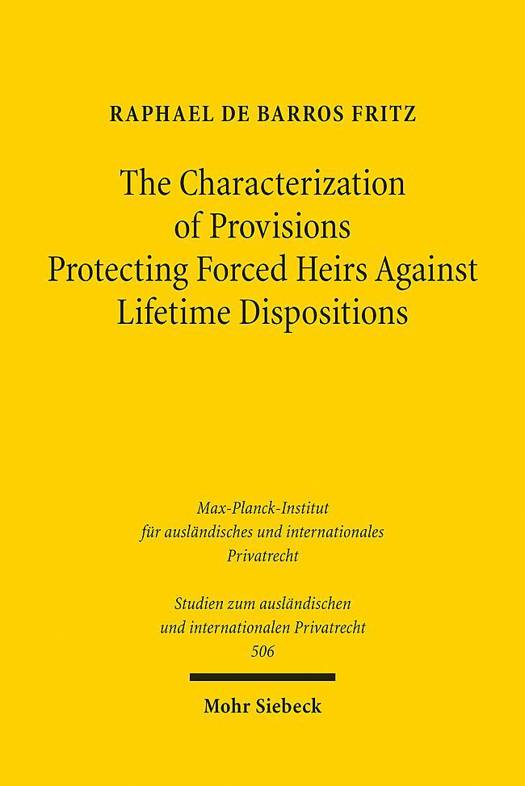
- Afhalen na 1 uur in een winkel met voorraad
- Gratis thuislevering in België vanaf € 30
- Ruim aanbod met 7 miljoen producten
- Afhalen na 1 uur in een winkel met voorraad
- Gratis thuislevering in België vanaf € 30
- Ruim aanbod met 7 miljoen producten
Zoeken
The Characterization of Provisions Protecting Forced Heirs Against Lifetime Dispositions
A Comparative Law Study of the Laws of Louisiana and Germany
Raphael de Barros Fritz
€ 104,45
+ 208 punten
Omschrijving
Normally, forced heirship is primarily associated with a restraint of the decedent's testamentary freedom of disposition. Nevertheless, to effectively protect the forced heirs, forced heirship systems usually also contain various mechanisms to restrain the decedent's lifetime freedom of disposition. Scholars and courts have been debating the proper characterization of these mechanisms in conflicts of laws for decades. Raphael de Barros Fritz addresses the many open questions surrounding this issue by analysing the characterization of forced heirship mechanisms in the laws of Louisiana and Germany.
Specificaties
Betrokkenen
- Auteur(s):
- Uitgeverij:
Inhoud
- Aantal bladzijden:
- 451
- Taal:
- Engels
- Reeks:
- Reeksnummer:
- nr. 506
Eigenschappen
- Productcode (EAN):
- 9783161623646
- Verschijningsdatum:
- 1/07/2023
- Uitvoering:
- Paperback
- Formaat:
- Trade paperback (VS)
- Afmetingen:
- 231 mm x 155 mm
- Gewicht:
- 480 g

Alleen bij Standaard Boekhandel
+ 208 punten op je klantenkaart van Standaard Boekhandel
Beoordelingen
We publiceren alleen reviews die voldoen aan de voorwaarden voor reviews. Bekijk onze voorwaarden voor reviews.











